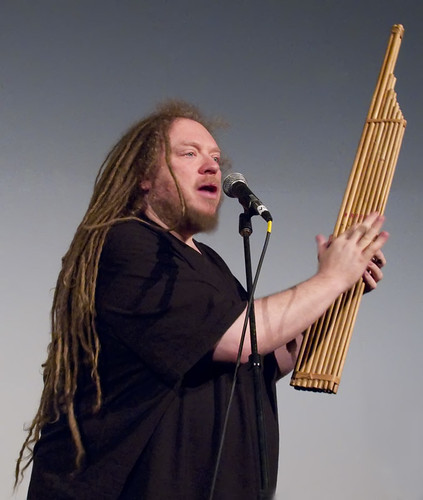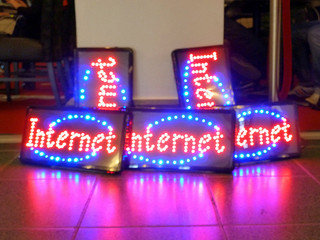In order to balance things up from my last EDCMOOC post, I had intended to write something relating to post humanism, but I’m still coming to terms with the concept and with the fundamental changes that its related values of transhumanism will wreak, not just upon society and the planet, but upon the minds and bodies of human beings themselves. So, seeing as I’ve been running a week behind and the course comes to a close tomorrow, I’ve decided to forgo any attempt at putting my thoughts down about “redfining the human” and the implications for education of such a paradigm shift, instead, I’m going to take a look back over what, for me, have been the highlights.
I have to say that although I’ve engaged with pretty much all of the course material, what’s really left the greatest impression on me, apart from Bleecker’s article about blogjets, is some of the content that other learners on the MOOC have produced, and the things that I’ve learned from them. This point only really struck me when Ary Aranguiz @trendingteacher graciously replied to a tweet saying “it’s been wonderful learning with you!” Immediately I thought, you know what, she’s right; I”ve really learnt a lot from other people on the course. Although I haven’t always kept up, or indeed had any timely comments to make within our quadblogging group, I’ve actually learnt lots just by watching the learning of others.
@trendingteacher I seem to have encountered a time lag on #edcmooc & even in the FB group. I've become a "Vicarious Learner" with your help.
— Helen Crump (@crumphelen) February 28, 2013
Vicarious learning (Bandura, 1962) is also known as observational learning, social learning, or modelling and is a type of learning that occurs as a function of observing, retaining and replicating behaviour observed in others, so here are my vicarious learning highlights from what’s been a very thought provoking and satisfying MOOC:
“All the world’s a MOOC, and all the men and women merely teachers and learners.” – blog post by Ary Aranguiz that prompted me to go off and investigate the topic of rhizomatic learning.
WOW! They’ve glassed us! – blog post by Angela Towndrow whose brilliant use of images really brought home to me the power that a visual story can have.
Voyages of the Starship #EDCMOOC – a “cheeky” animation by Willa Ryerson, documenting the week 1 hangout, that shows just how easy some tools are to learn, and what’s more, how important it is to have a sense of fun.
Fake Identity @HamishAMacleod – a spoof Twitter account for one of the course tutors, Hamish Macleod, created by Andy Mitchell. I thought the production of this as a digital artefact to represent learning from the course was at the same time both genius and risky. It certainly makes the point about identity and online security in the digital age. Click on the hyperlink “Fake Identity” in the tweet below to get the full effect of the spoof.
https://twitter.com/HamishAMacleod/status/306483968855908352
“Digital Life” – an augmented music video parody – catchy lyrics “Digital Life has Changed Who We Are” to the Buggle’s tune of “Video Killed the Radio Star” by Amy Burvall, which memorably gets the message across how life has now very much changed to become digital.
The Ecology of Yearning in a MOOC – a video by Ary Aranguiz, whose message “we all yearn for meaning, growth and connection” hit the spot for me as it seems to say a lot about why so many people showed up and played their part in what’s been a very special learning experience.
And finally, my thanks have to go to the EDCMOOC team
Dr Jen Ross Dr Christine Sinclair Dr Hamish Macleod Dr Sian Bayne Jeremy Knox
who did a great job in providing such a dynamic and thought provoking MASSIVE OPEN ONLINE COURSE. And like they say in their introduction, you can find out more about their work with the MSc in Digital Education here.

This work is licensed under a Creative Commons Attribution-NonCommercial-ShareAlike 3.0 Unported License.







